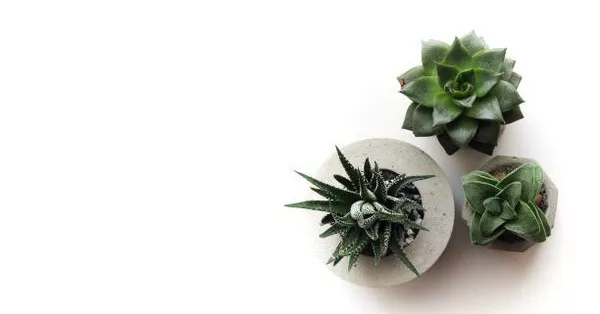Succulents, known for their resilience and adaptability, are beloved by gardeners and plant enthusiasts worldwide. However, their hardiness is not limitless, and understanding the lowest temperatures they can tolerate is crucial for ensuring their survival during colder seasons.
Succulents in Nature: Origins and Adaptations
To comprehend the lowest temperatures succulents can endure, it’s essential to first consider their native environments. Succulents have evolved in regions with arid and semi-arid climates, such as deserts and dry mountainous areas. These habitats are characterized by intense sunlight, scarce rainfall, and temperature extremes. Succulents have developed unique adaptations, including water-storing tissues and specialized photosynthesis processes, to thrive in such challenging conditions.
Temperature Tolerance of Common Succulent Varieties
Different succulent species exhibit varying degrees of cold tolerance. Some, like Sedum and Sempervivum, are considered cold-hardy and can withstand freezing temperatures. On the other hand, more tender succulents, such as certain varieties of Echeveria, may struggle in colder climates and require protection during winter months. Understanding the specific cold tolerance of the succulents in your collection is essential for providing appropriate care.
Determining the Lowest Tolerable Temperature
The lowest temperature a succulent can tolerate depends on several factors, including its species, overall health, and acclimatization. Generally, most succulents can endure temperatures as low as 20 to 25 degrees Fahrenheit (-6 to -4 degrees Celsius) for short periods without significant damage. However, prolonged exposure to freezing temperatures or sudden drops in temperature can be detrimental, leading to frost damage or even the death of the plant.
See Also: How to Treat Bugs on Succulents?
Factors Influencing Succulent Cold Tolerance
Species-Specific Adaptations:
Succulents have evolved specific mechanisms to cope with temperature fluctuations. Some species develop a waxy coating on their leaves, known as a cuticle, which helps reduce water loss and protects against extreme temperatures. Others have the ability to modify their metabolic processes to continue functioning efficiently in colder conditions.
Seasonal Acclimatization:
Succulents undergo seasonal changes that prepare them for temperature variations. During colder seasons, many succulents enter a period of dormancy, slowing down their growth and conserving energy. This natural adaptation allows them to withstand lower temperatures more effectively.
Soil Conditions:
The type of soil in which succulents are planted also influences their cold tolerance. Well-draining soil helps prevent water logging, reducing the risk of root rot during cold and wet periods. Proper soil composition is crucial for maintaining the health of succulents in cold climates.
Watering Practices:
Adjusting watering practices during colder months is essential for succulent care. Overly wet soil can lead to freezing and cause damage to the plant’s roots. Modifying the watering frequency and allowing the soil to dry out between waterings helps protect succulents from the adverse effects of freezing temperatures.
Protecting Succulents from Frost: Practical Strategies
Covering Plants:
One effective method to shield succulents from frost is to cover them during cold nights. Lightweight frost blankets or burlap can be draped over the plants, providing insulation and preventing direct exposure to freezing temperatures.
Move Indoors:
For potted succulents, especially those that are more sensitive to cold, bringing them indoors during the winter months is a reliable strategy. This ensures a controlled environment where temperatures remain above the succulent’s lowest tolerable limit.
Mulching:
Applying a layer of mulch around the base of outdoor succulents helps insulate the soil, maintaining a more stable temperature. This additional layer of protection minimizes temperature fluctuations, reducing the risk of frost damage.
Choose Cold-Hardy Varieties:
When planning your succulent garden, selecting cold-hardy varieties suitable for your climate is a proactive approach. Cold-resistant succulents, such as various types of Sedum and Agave, are better equipped to withstand chilly temperatures without compromising their health.
Observing Signs of Cold Stress in Succulents
Understanding the visual cues that indicate cold stress in succulents is crucial for timely intervention. Common signs include changes in color, particularly browning or blackening of leaves, wilting, and softening of the plant tissues. Addressing these symptoms promptly by implementing protective measures can prevent further damage and enhance the chances of recovery.
Recovery and Rehabilitation After Cold Exposure
If your succulents have experienced cold damage, it’s essential to allow them time to recover. Trim any damaged or dead parts of the plant, and adjust care practices to support the healing process. Providing optimal conditions, including proper light, well-draining soil, and careful watering, will encourage new growth and restore the succulent to its former vigor.
Conclusion
In conclusion, understanding the lowest temperatures succulents can tolerate is crucial for cultivating a thriving and resilient garden. By recognizing the unique adaptations of succulents, considering species-specific cold tolerances, and implementing practical protective measures, you can ensure the well-being of your succulent collection during colder seasons. With thoughtful care and attention, succulents can continue to bring beauty and vibrancy to your garden, even in the face of challenging temperature conditions.


